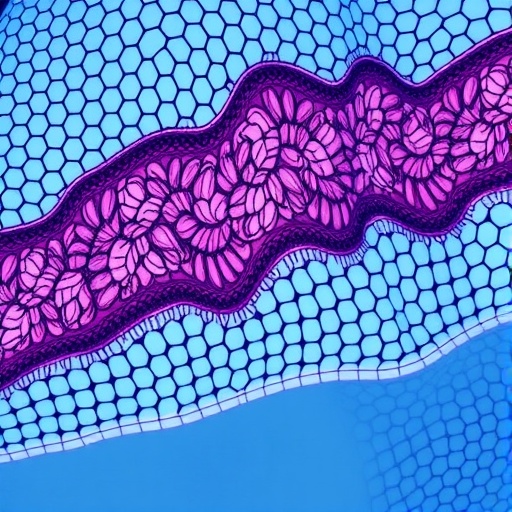
In the complex realm of surgical interventions, the inadvertent retention of foreign materials inside a patient’s body remains a grave concern, bridging the chasm between medical errors and forensic investigation. A recent in-depth case report and comprehensive literature review published in the International Journal of Legal Medicine has cast renewed spotlight on the phenomenon known as textiloma, a hidden menace borne from medical negligence with profound surgical and forensic implications. The article, authored by De Paola, Napoletano, Cirillo, and colleagues, presents a meticulous examination of a textiloma case while synthesizing the broader clinical, diagnostic, and medicolegal challenges associated with this perilous condition.
Textiloma, also interchangeably labeled as gossypiboma, arises from the accidental retention of textile materials such as surgical sponges or towels during operative procedures. Despite rigorous surgical protocols designed to prevent such outcomes, incidents persist, endangering patient safety and provoking complex litigation scenarios. The pathophysiology of textiloma involves a chronic foreign body reaction incited by retained textile matter, manifesting as fibrotic encapsulation or abscess formation. These biological responses often result in a spectrum of clinical presentations, ranging from asymptomatic masses to severe inflammatory complications, posing diagnostic dilemmas even decades after surgery.
The case report highlighted in the study involved a patient who underwent abdominal surgery and later developed unexplained symptoms including pain, palpable masses, and intermittent infections. Initial clinical and radiological assessments failed to pinpoint the etiology of these manifestations until advanced imaging revealed a suspicious encapsulated mass consistent with a retained surgical textile. The surgical team’s discovery of a gossypiboma during the subsequent intervention not only resolved the patient’s condition but also underscored the latent nature of textilomas, which can remain dormant before erupting into severe clinical syndromes.
.adsslot_VHicqDryW1{width:728px !important;height:90px !important;}
@media(max-width:1199px){ .adsslot_VHicqDryW1{width:468px !important;height:60px !important;}
}
@media(max-width:767px){ .adsslot_VHicqDryW1{width:320px !important;height:50px !important;}
}
ADVERTISEMENT
From a forensic perspective, the occurrence of textiloma transcends medical consequences to occupy a critical role in legal medicine. The failure to adhere to standardized surgical counts and safety checklists constitutes clear-cut evidence of negligence, subject to judicial scrutiny and malpractice claims. Furthermore, the identification of textiloma via radiological or pathological means demands precise documentation and expert testimony to unravel the circumstances under which the foreign object was retained. The reviewed literature emphasizes the necessity of multidisciplinary cooperation among surgeons, radiologists, pathologists, and forensic experts to achieve accurate diagnosis and conclusive medicolegal evaluations.
Radiologically, the identification of a textiloma relies heavily on imaging modalities such as computed tomography (CT) scans, magnetic resonance imaging (MRI), and ultrasound. These techniques divulge characteristic signs including spongiform patterns, calcifications, or well-defined encapsulated masses often accompanied by gas bubbles or fluid collections. Nonetheless, these indicators may mimic neoplastic or infectious lesions, complicating differential diagnosis. The article stresses the need for heightened suspicion and awareness among radiologists to consider retained textile materials in post-operative patients presenting with unexplained masses or inflammatory symptoms.
The implications extend beyond the single patient, impacting surgical teams and hospital systems globally. The persistence of textiloma cases signifies systemic shortcomings in surgical safety protocols, particularly the implementation and verification of count procedures for sponges and instruments. Modern technological advancements, including radiofrequency identification (RFID) tags embedded in surgical textiles, are proposed as adjunctive preventive measures. However, their widespread adoption is hindered by cost and infrastructural challenges, reflecting an ongoing tension between technological potential and practical clinical usage.
Clinically, the management of textiloma necessitates surgical removal once identified, as retained foreign bodies invariably precipitate pathological inflammatory reactions with potential for fistula formation, abscesses, or sepsis. The surgical extraction, while curative, carries risks associated with re-operation and anesthesia, emphasizing the primacy of prevention over treatment. Postoperative follow-up demands vigilance for recurrence or complications arising from the foreign body reaction itself. The case reviewed demonstrated favorable outcomes due to timely diagnosis and intervention, serving as a cautionary tale about delays in managing such potentially catastrophic iatrogenic conditions.
The article’s review draws attention to the psychosocial and medicolegal trauma inflicted on patients suffering from textiloma. Beyond physical complications, patients often endure psychological distress stemming from mistrust towards the healthcare system and prolonged diagnostic uncertainty. Legal battles ensuing from these episodes strain both patients and providers, prompting calls for transparent institutional policies and support mechanisms. Ethical considerations about disclosure and consent after identification of retained surgical items also demand rigorous discussion within medical communities.
Moreover, the forensic dimension extends into post-mortem examinations where undetected textilomas may confound cause-of-death analyses. Autopsy findings of retained surgical textiles necessitate careful differentiation from pathological masses or traumatic injuries. For forensic pathologists, awareness of the characteristic gross and microscopic features of textilomas is essential to establish timelines and reconstruct clinical histories pertinent to legal inquiries. The study’s extensive literature review complements these forensic challenges by aggregating data that reinforce the indispensable role of pathology in medico-legal determinations of surgical negligence.
This comprehensive exploration underscores a critical need for policy reforms aimed at mitigating textiloma incidence. Institutional adherence to surgical safety checklists, continuous education of operating room personnel, and incorporation of cutting-edge technological tools constitute pivotal strategies. National healthcare systems must prioritize quality control mechanisms and root cause analyses following textiloma identification to forestall recurrence and uphold patient safety standards. Integration of forensic oversight into healthcare audits may enhance accountability and transparency, fostering an environment resistant to such preventable errors.
In summary, the phenomenon of textiloma represents a confluence of surgical, clinical, forensic, and legal complexities that demand multidisciplinary attention. The 2025 publication by De Paola and associates serves not merely as a clinical case report but as a clarion call to the global medical community regarding the dire consequences of surgical negligence. With patient lives and legal ramifications intertwined, confronting the challenge of textiloma requires an unwavering commitment to safety, precision, and ethical responsibility at every step of surgical care.
As surgical techniques advance and patient safety remains paramount, tackling the invisible threat of retained surgical textiles will continue to be a crucial aspect of both operative practice and forensic investigation. The reviewed case and literature encapsulate this ongoing struggle and spotlight opportunities for innovation and systemic improvement. Ultimately, preventing textiloma transcends mere error elimination—it embodies the holistic ethos of healthcare excellence dedicated to protecting patients from harm at all costs.
Subject of Research: Surgical retention of foreign textile materials (textiloma/gossypiboma), its clinical presentation, diagnosis, treatment, and forensic-medical implications related to medical negligence.
Article Title: Textiloma: surgical and forensic implications of medical negligence. A case report and literature review.
Article References:
De Paola, L., Napoletano, G., Cirillo, B. et al. Textiloma: surgical and forensic implications of medical negligence. A case report and literature review. Int J Legal Med (2025). https://doi.org/10.1007/s00414-025-03547-6
Image Credits: AI Generated
Tags: accidental retention of surgical materialschronic foreign body reactionclinical presentations of textilomadiagnostic dilemmas in retained foreign objectsfibrotic encapsulation of foreign materialsforensic implications of medical negligencegossypiboma case studymedicolegal challenges in healthcarepatient safety in surgical proceduressurgical errors and litigationtextile material retention in surgerytextiloma risks in surgery






